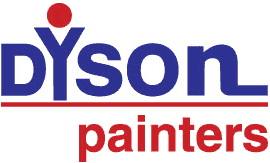Commercial pressure cleaning is one of the most effective and essential tasks when you are planning for the overall property maintenance. This process involves the use of high-pressure water to remove dirt, grime, mould, and other unwanted substances from various surfaces. Whether it’s sidewalks, parking lots, building exteriors, or industrial equipment, regular pressure cleaning enhances the appearance and extends the lifespan of these assets. This article unfolds an essential checklist and the best practices to follow when opting for a commercial pressure cleaning.
Importance of Regular Pressure Cleaning for Businesses
Business owners understand the importance of maintaining a clean and inviting environment for customers and employees. Regular pressure cleaning is important in achieving this goal by ensuring that the exterior surfaces of a commercial property remain free from dirt, oil, graffiti, and other pollutants. Here are some key reasons why businesses should prioritise it:
Enhanced Curb Appeal:
First impressions matter. A clean exterior communicates professionalism and care, which can attract more customers and enhance the overall reputation of the business.
Preventive Maintenance:
Pressure cleaning removes contaminants that can contribute to the deterioration of surfaces over time. By regularly cleaning surfaces, businesses can prevent costly repairs and extend the lifespan of their assets.
Health and Safety:
Mold, mildew, and other pollutants not only look unsightly but can also pose health risks to employees and customers. High-pressure cleaning helps eliminate these hazards, promoting a healthier environment.
Regulatory Compliance:
Many municipalities have regulations in place regarding the cleanliness of commercial properties. Regular pressure cleaning helps businesses stay compliant with these standards and avoid potential fines.
Cost-Effective Solution:
Compared to extensive repairs or replacements, routine pressure cleaning is a cost-effective maintenance measure that yields significant returns in terms of property value and longevity.
Proper Equipment and Gear
Effective commercial pressure cleaning requires the right equipment and protective gear to ensure safety and efficiency. Here are the essential items every pressure cleaning operator must have:
- Protective Eyewear: Safety goggles or glasses protect the eyes from debris, chemicals, and high-pressure water spray.
- Gloves: Sturdy gloves provide hand protection against abrasive surfaces and cleaning chemicals.
- Durable Footwear: Slip-resistant, closed-toe footwear protects against slips, falls, and injuries from heavy equipment.
- Ear Protection: Prolonged exposure to high-pressure water can be loud. Earplugs or earmuffs help protect against hearing damage.
- Respiratory Protection: Depending on the cleaning agents used, a respirator or mask may be necessary to avoid inhaling harmful fumes or particles.
Proper Equipment Selection and Maintenance
Choosing the right commercial pressure cleaning equipment is crucial for achieving optimal results. Businesses should invest in machines that suit the scope of their cleaning needs. Regular maintenance of equipment, including inspections, repairs, and replacements of worn parts, is essential to ensure safety and efficiency during operations.
Emergency Shutdown Procedures
Despite precautions, emergencies can still occur during pressure cleaning operations. Establishing clear emergency shutdown procedures is vital to minimise risks and ensure the safety of operators and others present inside the property. Operators should be trained to quickly and safely shut down equipment in case of accidents, leaks, or equipment malfunctions.
Site Evaluation
Before starting a commercial pressure cleaning project, thorough site evaluation and preparation are crucial steps to ensure safety, efficiency, and optimal results. This section explores the key considerations and best practices for preparing a site for pressure cleaning.
Assessing Potential Hazards
The first step in site evaluation is identifying and assessing potential hazards that could pose risks during the cleaning process. Some common hazards to look out for include:
- Electrical Outlets and Wiring: Ensure all electrical outlets and wiring are properly secured and protected from water exposure. Use ground fault circuit interrupters (GFCIs) where necessary to prevent electrical shocks.
- Fragile Surfaces: Identify delicate or vulnerable surfaces that could be damaged by high-pressure water, such as loose paint, fragile materials, or decorative elements.
- Obstacles and Tripping Hazards: Remove or secure any obstacles or debris that could impede the cleaning process or pose tripping hazards.
- Overhead Obstructions: Be mindful of overhead obstructions such as tree branches, awnings, or power lines that could interfere with the operation of cleaning equipment.
Establishing Safety Zones
Once potential hazards are identified, establish clear safety zones to ensure the protection of workers, customers, and passersby. Safety zones should include:
- Securing Loose Items: Secure or relocate loose items such as outdoor furniture, signage, or equipment that could be displaced or damaged by the cleaning process.
- Weather Considerations: Check weather forecasts and plan cleaning activities during favourable conditions. Avoid pressure cleaning during heavy rain, strong winds, or extreme temperatures to maintain safety and achieve optimal cleaning results.
Preparing Surfaces for Cleaning
Proper surface preparation is essential for achieving thorough and effective cleaning results. Follow these guidelines to prepare surfaces for commercial pressure cleaning:
- Remove Loose Debris: Use brooms, brushes, or blowers to remove loose debris, dirt, and leaves from the surfaces to be cleaned.
- Apply Cleaning Solutions: For stubborn stains or heavily soiled areas, pre-treat surfaces with appropriate cleaning solutions or detergents to facilitate easier removal of dirt and grime.
- Protect Surrounding Areas: Use plastic sheeting or tarps to protect adjacent surfaces, landscaping, and vegetation from overspray and cleaning chemicals.
- Test Cleaning Methods: Conduct a small test patch to determine the most suitable pressure settings and cleaning techniques for different surface materials.
By carefully evaluating and preparing the site for pressure cleaning, businesses can minimise risks, enhance safety, and optimise the effectiveness of their cleaning efforts.
Proper Techniques and Angles
Achieving optimal results with commercial pressure cleaning requires employing proper techniques and angles to effectively remove dirt and grime while safeguarding delicate surfaces. This section explores essential techniques and angles for successful commercial pressure cleaning operations.
Angles for Effective Cleaning
To maximise cleaning efficiency and protect surfaces from damage, operators should adhere to specific angles and patterns while using pressure cleaning equipment:
- Maintain a 45-Degree Angle: Hold the pressure cleaning nozzle at a 45-degree angle to the surface being cleaned. This angle provides effective cleaning power without risking damage to most surfaces.
- Avoid Direct Angles on Delicate Surfaces: For fragile or painted surfaces, avoid directing the spray nozzle perpendicular to the surface. Instead, adjust the angle to a more indirect position to prevent surface damage.
- Use a Fan Spray Pattern: Utilise a wide fan spray pattern for general cleaning. This pattern covers a larger area and reduces the intensity of the water stream, making it suitable for most surfaces.
- Keep a Safe Distance: Maintain a safe distance between the nozzle and the surface being cleaned. Start from a distance and gradually move closer as needed while monitoring the cleaning progress.
- Avoid High Pressure on Fragile Surfaces: Reduce the pressure settings or use lower-pressure nozzles when cleaning delicate surfaces such as wood, painted surfaces, or soft materials to prevent damage.
- Continuous Motion: Maintain a steady and consistent motion while cleaning. Avoid focusing on one spot for too long to prevent etching or stripping of surfaces.
- Test in an Inconspicuous Area: Before starting full-scale cleaning, perform a test spot in an inconspicuous area to ensure the selected pressure, angle, and technique are suitable for the surface material.
By applying these techniques and angles, operators can achieve thorough cleaning results while mitigating the risk of surface damage during commercial pressure cleaning projects.
Chemical Safety and Environmental Considerations
Incorporating chemical cleaning agents into pressure cleaning operations requires careful consideration of safety protocols and environmental impact. Follow these guidelines to ensure chemical safety and environmental responsibility:
Proper Handling and Storage
- Read Labels and MSDS: Familiarise yourself with the properties, handling instructions, and safety precautions of cleaning chemicals by reading labels and Material Safety Data Sheets (MSDS).
- Use Personal Protective Equipment (PPE): Wear appropriate PPE, such as gloves, goggles, and respiratory protection, when handling and applying chemicals.
- Secure Storage: Store chemicals in properly labelled, secure containers away from direct sunlight, heat sources, and incompatible materials.
Eco-Friendly Alternatives
- Choose Biodegradable Products: Opt for environmentally friendly and biodegradable cleaning solutions to minimise ecological impact.
- Water-Based Formulas: Use water-based cleaning agents whenever possible to reduce chemical runoff and environmental contamination.
Containment and Runoff Management
- Containment Systems: Implement containment measures, such as barriers or absorbent materials, to capture and contain chemical runoff during cleaning operations.
- Proper Disposal: Dispose of chemical waste according to local regulations and guidelines to prevent environmental pollution.
Protecting Plants and Landscaping
- Pre-Rinse and Post-Rinse: Thoroughly rinse vegetation with water before and after pressure cleaning to minimise chemical exposure.
- Use Biodegradable Protective Covers: Shield plants and landscaping with biodegradable covers to prevent chemical contact during cleaning.
By prioritising chemical safety and environmental considerations, businesses can uphold responsible practices while achieving effective cleaning outcomes.
Electrical Safety and Power Management
Commercial pressure cleaning involves the use of electrically powered equipment, requiring strict adherence to electrical safety guidelines and power management practices:
Outdoor Outlets and GFCIs
- Use Outdoor-Rated Outlets: Ensure that pressure cleaning equipment is plugged into outdoor-rated electrical outlets to minimise the risk of electrical hazards.
- Ground Fault Circuit Interrupters (GFCIs): Use GFCIs to protect against electric shock by quickly cutting off power in the event of a ground fault.
Extension Cords and Outlets
- Inspect Extension Cords: Regularly inspect extension cords for damage, wear, or fraying, and replace them as needed to prevent electrical hazards.
- Avoid Overloading Circuits: Distribute power usage across multiple circuits to avoid overloading electrical outlets and causing circuit breakers to trip.
Equipment Inspections
- Routine Maintenance: Conduct regular inspections and maintenance of pressure cleaning equipment to identify and address potential electrical issues promptly.
Weather Considerations
- Avoid Wet Conditions: Refrain from using electrically powered equipment in wet or rainy conditions to prevent electrical shocks or short circuits.
Safe Practices for Power Cords
- Keep Cords Clear: Keep power cords clear of water, debris, or obstacles during operation to minimise the risk of electrical accidents.
By implementing these electrical safety measures and power management practices, businesses can ensure the safety of operators and others during commercial pressure cleaning operations while maintaining operational efficiency.
We Offer Expert Commercial Pressure Cleaning of International Standards
Commercial pressure cleaning requires specific training, meticulous preparation, and skilled personnel to accomplish the operation safely and efficiently. It is crucial to hire experienced professionals to handle the job to avoid any mistakes or mishaps. At Dyson Painters in Hobart, our expert team delivers international standards of cleanliness, ensuring your commercial property shines with professionalism and curb appeal. Trust us to use advanced techniques, eco-friendly products, and meticulous attention to detail to exceed your expectations.
We offer comprehensive packages which include pressure cleaning, plaster repair, colour consultancy, and painting services for residential and commercial properties. Contact us today for a personalised consultation and discover how we can enhance your property’s appearance and longevity.
Let us handle the dirt and grime while you focus on growing your business. Elevate your property to international standards with our trusted solutions for high-pressure cleaning in Hobart. Reach out to us at 0420-213-214 for a complimentary consultation or email us at dysonpainters@bigpond.com for any queries. We will be happy to assist you.





